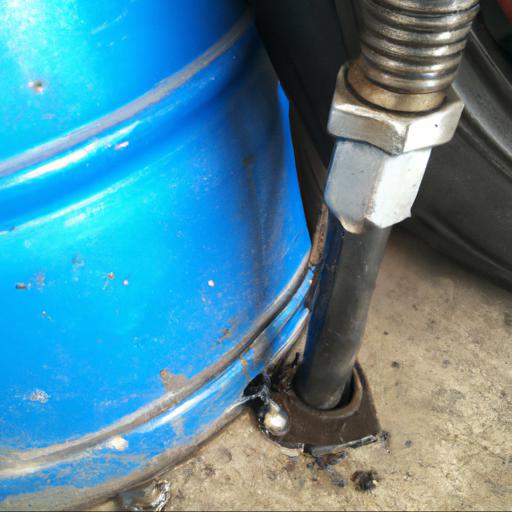Are you dealing with a damping off problem in your garden? Damping off is a common issue among gardeners, caused by a fungal disease that can kill seedlings and young plants.
Fortunately, there are a few simple steps you can take to prevent damping off and keep your garden healthy. In this blog, we will discuss how to prevent damping off and keep your plants safe. We will look at the causes of damping off, ways to prevent it, and how to treat it if it occurs.
With the right knowledge and prevention methods, you can protect your garden from damping off and keep your plants healthy.
Causes of damping off

As a UK garden expert, I know all too well that damping off can be a huge challenge for gardeners. Whether you’re just getting started or have been gardening for some time, understanding how to prevent damping off is key to having successful garden results. Thankfully, there are some steps you can take to protect your garden against damping off and keep your plants healthy.
Damping off is typically caused by a variety of fungal or bacterial infections that can rapidly spread and cause significant damage to your garden. These infections usually start when young plants are introduced to soil containing high levels of microbial activity, such as overly moist soil or a high-water table.
Some other common causes of damping off include overly dry or nitrogen-deficient soil, very dense planting, and poor air circulation in the garden. Fortunately, there are some steps you can take to reduce the risk of damping off.
To start, choose a planting site with well-draining soil and reduce the amount of moisture in the soil by adding mulch or compost. You can also start your seedlings indoors or in a greenhouse environment to reduce the risk of external fungal growth. Additionally, ensure your plants have enough room to grow, using spacing methods that can help protect them from disease.
Finally, regularly inspect and clean your garden, removing any dead or decaying plants from the area to stop the spread of fungi and other infections. By taking these preventative steps, you can help protect your garden from damping off and maintain a healthy environment for your plants to thrive.
Investing in proper garden maintenance is a crucial step for any gardener, so it’s important to understand how to identify and reduce the risk of damping off for successful gardening results.
Prevention strategies for damping off

As a UK garden expert, one of the most important issues to consider when taking care of your plants is how to prevent damping off, a disease that can cause decline and death of plants. Damping off can happen to any type of plant and it is caused by a number of fungi, which thrive in warm and damp conditions. Since prevention is always better than cure, the goal of this article is to help provide gardeners with the strategies and tips for preventing this plant disease.
The best way to reduce the risk of damping off is to make sure your garden has meticulous sanitation practices. Get rid of any dead or diseased plants, as they provide a perfect habitat for the fungi that cause damping off.
Prune away any wilting or discoloured stems and leaves as these can be early warning signs of the disease. Also, clean up any plant debris, as these parts of a plant are prime targets for the fungi. Another helpful strategy to prevent damping off is to increase air circulation around the plants.
Make sure you provide plenty of space between plants by thinning out seedlings and arranging the area to maximise airflow. You can also look into installing fans to pump some additional circulation throughout the garden.
Also consider avoiding over-watering as excessive humidity encourages the growth of fungi. Additionally, water at the base of plants to help ensure foliage and soil stays dry, and to also prevent fungal diseases from splashing up from soil onto the plants.
Finally, if you haven’t done so already, treat your soil with preventive measure such as fungicides or natural products such as garlic or cinnamon. Fungicides can offer long-term protection for your garden if used correctly, however it’s important to be mindful of the strength of these treatments. Consider visiting your local garden centre for more information on some specific treatments for your particular garden.
In conclusion, as a UK garden expert, I recommend gardeners practice some simple prevention strategies to keep their plants healthy and prevent fungal diseases such as damping off. Implementing basic sanitary goals, improving air circulation, and treating soil with preventive measures are all useful steps towards preventing this disease. With these tips and tricks in mind, you can reduce the risk of damping off and have a beautiful garden this summer!
Tips for avoiding damping off

As a UK garden expert, I am here to give you my tips on how to prevent damping off and keep your plants healthy. Damping off is an issue that can arise when plants are in the early stages of germination and can be caused by a number of external factors, most of which are climate related. The first tip for avoiding damping off is to make sure you have adequate ventilation.
This is especially important as a lack of air circulation can create a humid environment, which can provide the perfect conditions for fungal growth. Also, make sure that your seedbeds are well-drained, since water-logging can contribute to the fungal growth that causes damping off.
The second tip is to apply pre-emergent fungicides to the soil prior to planting. This can help to prevent pathogens from entering the plant roots and affecting the plants before they are established.
After planting, you should periodically inspect the seedlings to identify potential damping-off problems at an early stage so that you can treat them promptly. Spraying or drenching with a fungicide at this point can also help to reduce the possibility of fungal infection. Finally, it is also important to rotate crops regularly to avoid any build up of fungal spores.
This involves replacing crops every two or three years, and will help to maintain the health of your soil and reduce the risk of damping-off. By following these simple tips, you will help to prevent the costly and frustrating problem of damping-off.
This is because the sooner you can identify the problem and take action, the less damage the disease will cause to your plants. So make sure to stay vigilant and ensure you have a healthy and productive garden in the future.
Our video recommendation
Conclusion
Damping off is a common problem in plants caused by fungi. To prevent damping off, it is important to keep the soil clean, use a sterile potting mix, water plants at the base, provide adequate air circulation, and avoid overcrowding.
Additionally, using a fungicide can help prevent damping off. Following these steps will help ensure healthy, thriving plants.
FAQ
What are the causes of damping off?
The primary cause of damping off is a fungal infection, usually caused by species of Pythium, Fusarium, or Rhizoctonia. Other causes include poor drainage, overwatering, and cold temperatures.
What are the signs of damping off?
The signs of damping off include wilting of seedlings, discoloration of stems, and rotting of the stem base. Other symptoms include stunted growth, yellowing of leaves, and dark spots on the leaves.
What are the best practices to prevent damping off?
The best practices to prevent damping off include: using sterile potting soil, avoiding over-watering, providing adequate air circulation, avoiding overcrowding of seedlings, and using fungicides or biological control agents.
What are the most common fungi that cause damping off?
The most common fungi that cause damping off are Pythium, Rhizoctonia, and Fusarium.
How can I identify damping off in my plants?
Damping off is a fungal disease that affects young seedlings and can be identified by wilting, discoloration, and death of the seedlings. Symptoms may also include dark lesions on the stems, yellowing of the leaves, and rotting of the roots.
What are the best methods to control damping off?
The best methods to control damping off include using disease-free seed, avoiding overwatering, providing adequate air circulation, and using fungicides.

